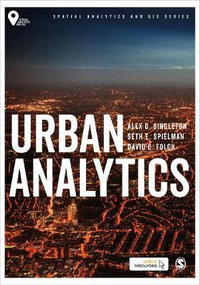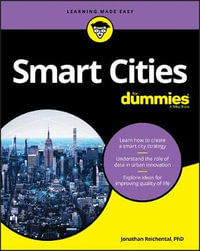
Land Subsidence Analysis in Urban Areas
The Bangkok Metropolitan Area Case Study
By: D. G. Zeitoun, Eliyahu Wakshal, David G. Zeitoun
Hardcover | 4 January 2013
At a Glance
Hardcover
$176.90
Aims to ship in 7 to 10 business days
ISBN: 9789400755055
ISBN-10: 9400755058
Series: Springer Environmental Science and Engineering
Published: 4th January 2013
Format: Hardcover
Language: English
Number of Pages: 328
Audience: Professional and Scholarly
Publisher: Springer Nature B.V.
Country of Publication: NL
Dimensions (cm): 23.39 x 15.6 x 1.91
Weight (kg): 0.64
Shipping
| Standard Shipping | Express Shipping | |
|---|---|---|
| Metro postcodes: | $9.99 | $14.95 |
| Regional postcodes: | $9.99 | $14.95 |
| Rural postcodes: | $9.99 | $14.95 |
How to return your order
At Booktopia, we offer hassle-free returns in accordance with our returns policy. If you wish to return an item, please get in touch with Booktopia Customer Care.
Additional postage charges may be applicable.
Defective items
If there is a problem with any of the items received for your order then the Booktopia Customer Care team is ready to assist you.
For more info please visit our Help Centre.
You Can Find This Book In
This product is categorised by
- Non-FictionEarth Sciences, Geography, Environment, PlanningRegional & Area PlanningUrban & Municipal Planning
- Non-FictionPolitics & GovernmentCentral GovernmentCentral Government Policies
- Non-FictionComputing & I.T.Computer Programming & Software DevelopmentSoftware Engineering
- Non-FictionEarth Sciences, Geography, Environment, PlanningEarth SciencesMeteorology & Climatology
- Non-FictionSciencePhysicsApplied PhysicsGeophysics
- Non-FictionEarth Sciences, Geography, Environment, PlanningEarth SciencesGeology & The LithosphereEconomic Geology
- Non-FictionEngineering & TechnologyCivil EngineeringStructural EngineeringSoil & Rock Mechanics
- Non-FictionEarth Sciences, Geography, Environment, PlanningEarth SciencesHydrology & The HydrosphereLimnology & Freshwater























